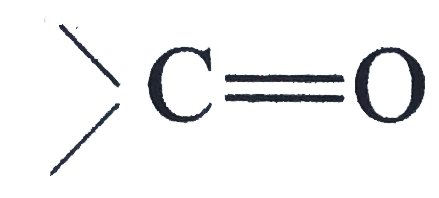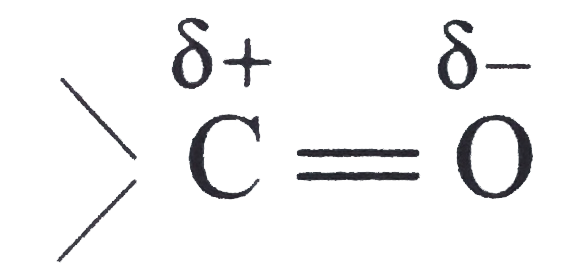The acidic character of alcohols is due the polar nature of O-H bond. An e releasing group (−CH3−C2H5) increases e density on oxygen thus decreasing the acidity while e withdrawing group increases the acidity.
Which among the following is most acidic




The correct Answer is:D
To determine which alcohol is the most acidic among the given options, we need to analyze the structure of each alcohol and the effects of substituents on their acidity. The acidity of alcohols is influenced by the stability of their conjugate bases, which can be affected by electron-donating or electron-withdrawing groups.
1. Understanding Acidity in Alcohols:
- The acidic character of alcohols is primarily due to the polar nature of the O-H bond. When an alcohol donates a proton (H⁺), it forms a conjugate base (alkoxide ion).
- The stability of this conjugate base is crucial in determining the acidity of the alcohol. A more stable conjugate base corresponds to a stronger acid.
2. Identifying Electron-Withdrawing and Electron-Donating Groups:
- Electron-donating groups (like -CH₃ or -C₂H₅) increase electron density on the oxygen atom, making the conjugate base less stable and thus decreasing acidity.
- Electron-withdrawing groups (like -NO₂) decrease electron density on the oxygen atom, stabilizing the conjugate base and increasing acidity.
3. Analyzing Each Option:
- For each alcohol, we will consider the effects of substituents on the O-H bond and the resulting conjugate base.
- Let's denote the alcohols as A, B, C, and D based on the options provided.
4. Drawing Conjugate Bases:
- For each alcohol, remove the H from the O-H bond to form the conjugate base and analyze the stability based on the substituents present.
5. Stability of Conjugate Bases:
- Alcohol A: If it has a strong electron-withdrawing group (e.g., -NO₂), the conjugate base will be stabilized, making it more acidic.
- Alcohol B: If it has an electron-donating group, the conjugate base will be less stable, making it less acidic.
- Alcohol C: If it has both -NO₂ and an electron-donating group, the overall effect will depend on the dominant influence of the substituents.
- Alcohol D: If it has a strong electron-withdrawing group and no significant electron-donating groups, it will likely be the most acidic.
6. Conclusion:
- After analyzing the conjugate bases and their stability, we find that the alcohol with the strongest electron-withdrawing group (like -NO₂) and minimal electron-donating groups will be the most acidic.
- Based on the analysis, Option 4 is determined to be the most acidic.
Final Answer:
The most acidic alcohol among the given options is Option 4.
- The acidic character of alcohols is primarily due to the polar nature of the O-H bond. When an alcohol donates a proton (H⁺), it forms a conjugate base (alkoxide ion).
- The stability of this conjugate base is crucial in determining the acidity of the alcohol. A more stable conjugate base corresponds to a stronger acid.
- Electron-donating groups (like -CH₃ or -C₂H₅) increase electron density on the oxygen atom, making the conjugate base less stable and thus decreasing acidity.
- Electron-withdrawing groups (like -NO₂) decrease electron density on the oxygen atom, stabilizing the conjugate base and increasing acidity.
- For each alcohol, we will consider the effects of substituents on the O-H bond and the resulting conjugate base.
- Let's denote the alcohols as A, B, C, and D based on the options provided.
- For each alcohol, remove the H from the O-H bond to form the conjugate base and analyze the stability based on the substituents present.
- Alcohol A: If it has a strong electron-withdrawing group (e.g., -NO₂), the conjugate base will be stabilized, making it more acidic.
- Alcohol B: If it has an electron-donating group, the conjugate base will be less stable, making it less acidic.
- Alcohol C: If it has both -NO₂ and an electron-donating group, the overall effect will depend on the dominant influence of the substituents.
- Alcohol D: If it has a strong electron-withdrawing group and no significant electron-donating groups, it will likely be the most acidic.
- After analyzing the conjugate bases and their stability, we find that the alcohol with the strongest electron-withdrawing group (like -NO₂) and minimal electron-donating groups will be the most acidic.
- Based on the analysis, Option 4 is determined to be the most acidic.
The most acidic alcohol among the given options is Option 4.
Topper's Solved these Questions
- CONCEPT OF ACIDS AND BASESBOOK - FIITJEECHAPTER - CONCEPT OF ACIDS AND BASESEXERCISE - COMPREHENSION-III
2 Videos
- CONCEPT OF ACIDS AND BASESBOOK - FIITJEECHAPTER - CONCEPT OF ACIDS AND BASESEXERCISE - MATRIX - MATCH TYPE QUESTIONS
3 Videos
- CONCEPT OF ACIDS AND BASESBOOK - FIITJEECHAPTER - CONCEPT OF ACIDS AND BASESEXERCISE - COMPREHENSION-I
3 Videos
- CHEMISTRY IN EVERY DAY LIFE BOOK - FIITJEECHAPTER - CHEMISTRY IN EVERY DAY LIFE EXERCISE - ASSIGNMENT PROBLEMS (OBJECTIVE) Level - II (Numerical Based Questions)
5 Videos
- ELECTROCHEMISTRYBOOK - FIITJEECHAPTER - ELECTROCHEMISTRYEXERCISE - Matcing Type Single Correct Questions
3 Videos
Similar Questions
Carboxylic acids are distinctly acidic and ionise in water to give H3O+ ions. In general, electron withdrawing groups increase the acidity of carboxylic acids while electron donating groups decrease the acidity of the carboxylic acid. The electron releasing groups such as−CH3−OH,−NH2 and −OCH3 make benzoic acid weaker while electron withdrawing groups such as −CI,−NO2, etc., make benzoic acid stronger. The ortho isomer of every substituted benzoic acid is the strongest among the three isomers due to effect known as ortho effect. Carboxylic acids neutralise alkalies, decompose carbonates and bicarbonates evolving CO2 with brisk effervescence.
Arrange the following in increasing order of acidic strength :
FCH2COOH,CH3COOH,CICH2COOH,CH3CH2OH,C6H5COOH
View SolutionCarboxylic acids are distinctly acidic and ionise in water to give H3O+ ions. In general, electron withdrawing groups increase the acidity of carboxylic acids while electron donating groups decrease the acidity of the carboxylic acid. The electron releasing groups such as−CH3−OH,−NH2 and −OCH3 make benzoic acid weaker while electron withdrawing groups such as −CI,−NO2, etc., make benzoic acid stronger. The ortho isomer of every substituted benzoic acid is the strongest among the three isomers due to effect known as ortho effect. Carboxylic acids neutralise alkalies, decompose carbonates and bicarbonates evolving CO2 with brisk effervescence.
among
which is the strongest acid .
View Solution
Knowledge Check
The acidic character of alcohols is due the polar nature of O-H bond. An e releasing group (−CH3−C2H5) increases e density on oxygen thus decreasing the acidity while e withdrawing group increases the acidity.
Which among the following is a better proton acceptorACH3O−BOH−CSO2−4DNO−3The acidic character of alcohols is due the polar nature of O-H bond. An e releasing group (−CH3−C2H5) increases e density on oxygen thus decreasing the acidity while e withdrawing group increases the acidity.
Which is the strongest acid among:ACH3OHBCH3CH2OHCCICH2OHDNO2−CH2−OHWhich of the following groups will increase the acidity of phenol?
A−NO2B−CNC−X (halogens)DAll
Which of the following groups will increasing the acidity of phenol?
View SolutionThe acidic character of 1∘,2∘,3∘ alcohols, H2O and RC≡CH is of the order
View SolutionWhich of the following group will increase more acidity of acetic acid ?
View SolutionThis section contains Assertion and Reason type question. Each question has 4 choices (1), (2), (3) and (4), out of which only one is correct.
Assertion (A) Increasing order of acid strength of alcohol is
1∘alcohol>2∘alcohol>3∘alcohol
Reason (R) An electron-releasing group (−CH3,−C2H5) increases the electron density on oxygen which tends to increases the polarity of the O-H bond.
View SolutionAldehydes and ketones ar specially susecptible to nucleophilic addition because carbonyl group
 is polar (due to electronegativity difference between carbon and oxygen)
is polar (due to electronegativity difference between carbon and oxygen)

Positive charge on carbon makes it reactive towards the nucleophili. This addition is catalysed by acid.
Reactivity of carbonyl compound towards nucleophilic addition increases with increases in the electron deficiency at carbonyl carbon. Thus, (-I.E.)groups increase while (+I.E.) groups decrease the reactivity of carbonyl compound.
Which among the following is most reactive to give nucleophilic addtion ?
View Solution
